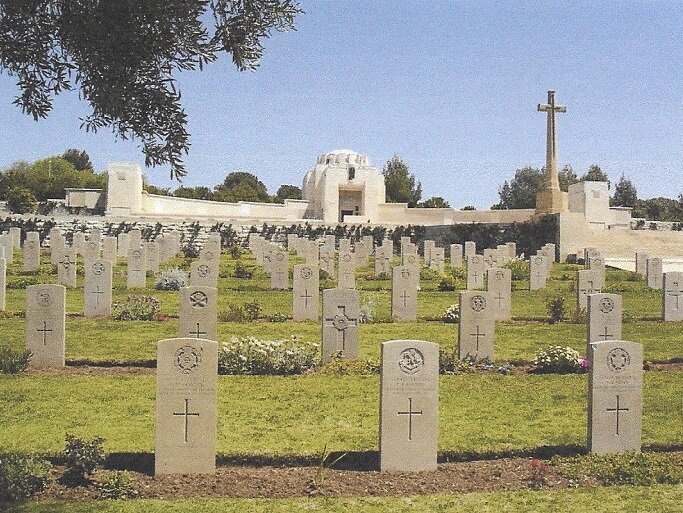At the short service at the cenotaph in Portsmouth at 11 o’clock this morning, marking the 1918 Armistice, the focus was on the big numbers. The Lord Mayor read out just a few of the grim statistics of war, a frankly unimaginable litany of death - numbers in the thousands, and then the millions, of fallen and wounded.
They’re such huge numbers, and on a global scale, that it’s impossible to grasp the millions of individual stories and the millions of individual segments of misery, grief and memory, stretched across thousands of miles. Parents back home had to cope with the loss and burial of sons in countries they only knew from schoolroom maps coloured with imperial pink.
If they could afford it, devastated families could pay to have an inscription added to their dead son’s gravestone.
In 1990 I was based for a few months in the British School of Archaeology in Jerusalem (now the Kenyon Institute, East Jerusalem). It was a time of the Palestinian intifada, political mistrust, and a drop in tourism. The Old City and its outskirts were as contested as they had ever been for thousands of years - including during The Great War, where British troops fought in Egypt and Palestine to take territory and control from the Ottoman Turks.
East Jerusalem 1990
I would walk sometimes from the British School of Archaeology up the slope of Mount Scopus, along the Mount of Olives Road, towards the Hebrew University, looking at the historic and living Palestinian buildings and the awe-inspiring views of the Old City. And on these walks, I found the Commonwealth War Graves Cemetery.
A few weeks ago, nearly thirty years later, I found myself telling a close friend about the grave of a teenage soldier. His white military gravestone had an inscription that had affected me so much that I stood with tears streaming down my face, at which point a concerned Palestinian groundsman gently walked up to me and asked if he could help me? I thanked him and said no, I was just a visitor. I didn’t take photographs; it didn’t seem respectful. And that was my memory of that event.
Over the past couple of days, while we have been surrounded by poppy-flecked, granite-faced images of remembrance, I had wondered if my memory were playing tricks on me; and if I’d really seen what I’d thought I’d seen. I found the online register of burials and inscriptions at the Commonwealth War Grave Cemetery in Jerusalem, and after an hour I found it. I found my memory.
George West was 19. His parents, from Govanhill, Glasgow, had paid for a simple inscription to be added to his gravestone:
‘OUR BOY’
I can’t think of anything that could strip away the sanctimony of patriotism more, to focus instead on the heartbreaking loss of a loved child born and raised within a family, never to be held tight again, than that inscription. Two words. Just two words.
And with those two words, George West’s parents reclaimed their son from the grip of the generals and the state; and though he lay in the ground in Jerusalem, they re-situated him back in their hearts, and next to their hearth, where George truly belonged, in an act of painful, loving ownership and mutual dependency. With those two words the Wests of Govanhill wrote their world onto this carefully-tended funerary landscape of East Jerusalem; and in turn, passers-by have brought their impressions of that world back home again. Tears and memories are re-made, and they run through time and across space - small particles of sadness, perhaps, but they are the atoms of the greater stuff of loss.
And with their simple plain words, Mr and Mrs West told those generals and the state: he doesn’t belong to you any more. He’s Our Boy.
Acknowledgments
The Commonwealth War Graves Commission https://www.cwgc.org/find-war-dead/casualty/648433/west,-george/
Edits: 16/7/21


